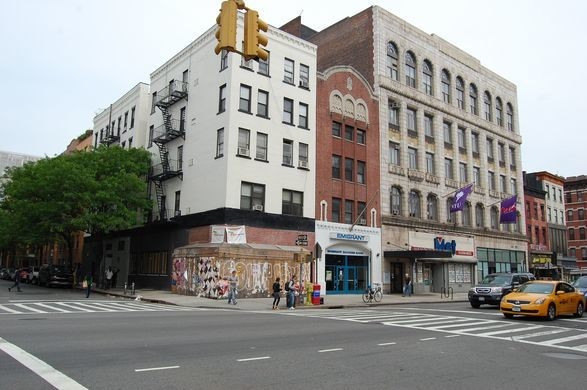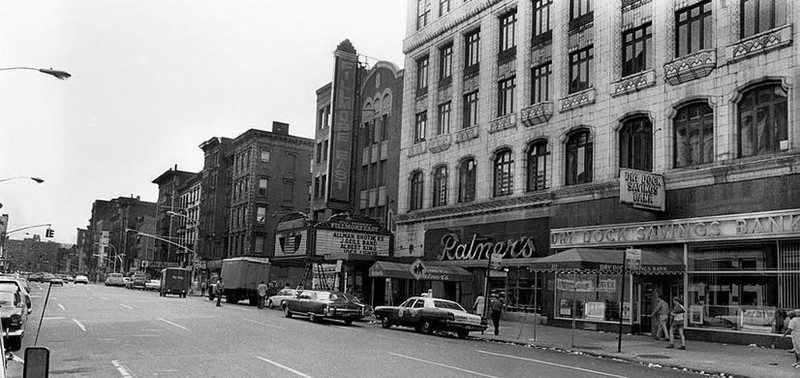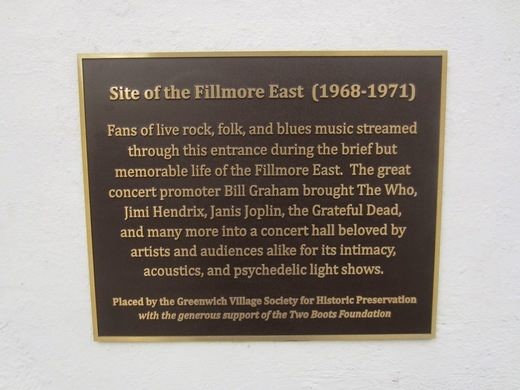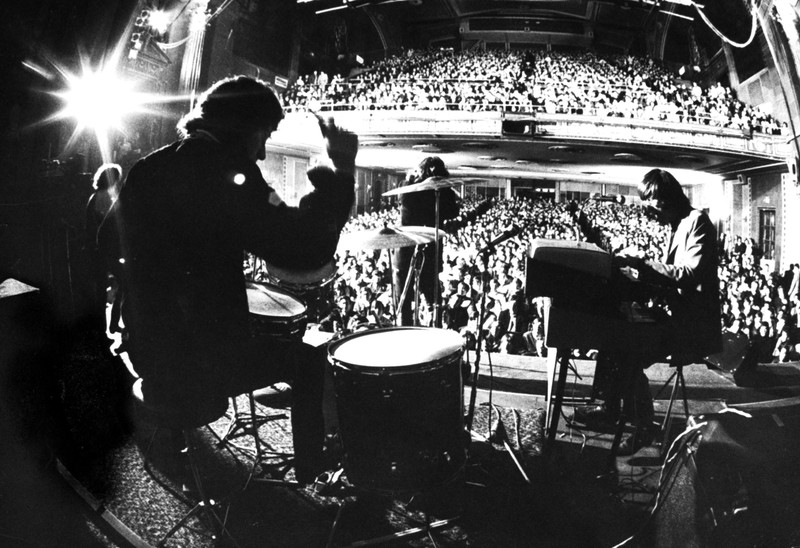The Fillmore East (1968-1971)
Introduction
Text-to-speech Audio
Images
The middle building with the arched roof house the Fillmore East

The venue in its heyday

Today, only this historic marker identifies the unique history of this New York landmark

The Doors at the Fillmore East

Backstory and Context
Text-to-speech Audio
The building that would one day be known to music aficionados around the world as the Fillmore East began its life in 1926 as a Yiddish theater known as the Commodore. At that time, 2nd Avenue was often referred to as the Jewish Rialto, as it was home to a number of Yiddish theaters as well as the Commodore. In addition to live performances, the theater was also frequently rented for left-wing gatherings.
The Jewish population of the neighborhood was already declining even as grand Yiddish theaters like the Commodore were being built. In subsequent years, the strip of theaters began a long decline and the Commodore changed hands. By mid-century, the building housed an ordinary movie theater, although it occasionally hosted big name entertainers and writers such as Lenny Bruce and Allen Ginsberg.
In 1968, when it was known as the Village Theater, Bill Graham purchased the building. Graham, a colorful character who once had a bit part in "Apocolypse Now," was one of the most well-known concert promoters of the late twentieth century. He was already famous in San Francisco as the owner of the Fillmore Auditorium (which became known as the Fillmore West after Graham's purchase of the Manhattan venue), which helped to popularize the counterculture and elevated California-based bands like the Grateful Dead and Jefferson Airplane to a national audience. New York was Graham's hometown and he hoped to recreate his West Coast success on the Lower East Side.
Though the venue was relatively small, it could accommodate an audience of 2,600. Graham began running two-show concerts on Fridays and Saturdays and the Fillmore quickly became one of the city's most popular live music venues. Though it would operate for only three years, from 1968 to 1971, in that short period the Fillmore East hosted some of the most iconic names in rock music.
Among the performers who appeared at the Fillmore were the Doors, Led Zeppelin, Crosby, Stills, & Nash, Pink Floyd, Janis Joplin, and the Grateful Dead. Jimi Hendrix recorded two performances at the Fillmore--Band of Gypsys and Live at the Fillmore East. The Allman Brothers, one of Graham's favorite bands, played the Fillmore East so often that they were regarded as the house band. When Graham eventually grew tired of concert promotion and decided to close the doors of the Fillmore in 1971, it was the Allman Brothers that he chose to play an epic final concert; it lasted for seven straight hours.
Following the last concert, the building sat empty for ten years. It was then reinvented as a private gay club known as The Saint, a business that saw declining patronage as many of their patrons suffered during the AIDS epidemic of the 1980s. Today, the former lobby of the Fillmore serves as a branch of Emigrant Bank. A plaque on the building's exterior and an exhibit of memorabilia inside are the only indications of the building's significance to music history.
Cite This Entry
Woodham, Rebecca and Clio Admin. "The Fillmore East (1968-1971)." Clio: Your Guide to History. September 3, 2020. Accessed March 28, 2025. https://theclio.com/entry/113620
Sources
Rivers, Justin. This Week in NYC History: The Fillmore East Closes on June 27, 1971, Untapped New York . June 29th 2016. Accessed September 2nd 2020. https://untappedcities.com/2016/06/29/this-week-in-nyc-history-the-fillmore-east-closes-on-june-27-1971/.
Pareles, Jon. In Trippy Times, Bill Graham Took Care of Reality , New York Times . February 13th 2020. Accessed September 2nd 2020. https://www.nytimes.com/2020/02/13/arts/music/bill-graham-rock-roll-revolution.html.
Reiff, Corbin . Fillmore East: 15 Great Shows , Rolling Stone . June 27th 2016. Accessed September 2nd 2020. https://www.rollingstone.com/music/music-news/fillmore-east-15-great-shows-222941/.
The Fillmore East , Atlas Obscura . Accessed September 2nd 2020. https://www.atlasobscura.com/places/the-fillmore-east-new-york-new-york.

